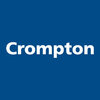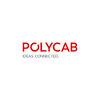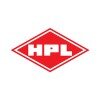Filter interviews by
Havells Interview Questions, Process, and Tips
Havells Interview Experiences
209 interviews found
I applied via Recruitment Consulltant and was interviewed in Apr 2023. There were 3 interview rounds.

(4 Questions)
- Q1. Plastic shrinkage?
- Q2. How many types of plastic material category?
- Ans.
There are seven main categories of plastic materials.
Thermoplastics
Thermosets
Elastomers
Composites
Biodegradable plastics
Engineering plastics
High-performance plastics
- Q3. Plastic rib thickness standard?
- Ans.
Plastic rib thickness standard varies depending on the application and material used.
Plastic rib thickness is typically between 0.5mm to 5mm.
Thicker ribs provide more strength but may increase material usage and cost.
Thinner ribs are more cost-effective but may be prone to warping or breaking.
Consider the material properties and intended use when determining rib thickness.
Consult industry standards and guidelines for s
- Q4. How many types of defects in plastic?
- Ans.
There are three main types of defects in plastic: surface defects, physical defects, and chemical defects.
Surface defects include scratches, sink marks, and flow marks.
Physical defects include bubbles, voids, and warping.
Chemical defects include discoloration, degradation, and contamination.
(7 Questions)
- Q1. Diff b/w hot runner & cold runner?
- Q2. How to prevent plastic defects?
- Ans.
Preventing plastic defects involves proper material selection, design optimization, and quality control measures.
Selecting the right type of plastic for the application
Optimizing the design to minimize stress concentrations
Implementing proper molding techniques and parameters
Conducting thorough quality control inspections
Training staff on proper handling and storage of plastic materials
- Q3. No. of tonnage molding machine you are used?
- Ans.
I have experience working with various tonnage molding machines, including 50-ton, 100-ton, and 200-ton machines.
50-ton molding machine
100-ton molding machine
200-ton molding machine
- Q4. What is draft angle in plastic?
- Ans.
Draft angle in plastic is the degree of taper or slope applied to the vertical walls of a plastic part to facilitate its ejection from the mold.
Draft angles are typically recommended to be between 1-3 degrees for most plastic parts
Draft angles help prevent the part from getting stuck in the mold during ejection
Examples of draft angles include adding a slight taper to the sides of a plastic cup or the walls of a plastic
- Q5. What is parametric modelling?
- Ans.
Parametric modelling is a design approach where the model is defined by a set of parameters and rules that govern its shape and size.
Uses parameters to define the shape and size of the model
Allows for easy modification of the design by changing parameters
Enables creation of complex designs with interconnected features
Commonly used in CAD software like SolidWorks and Autodesk Inventor
- Q6. How to solve plastic defects issue in plastic?
- Ans.
Plastic defects can be solved by identifying root causes, adjusting processing parameters, using quality materials, and implementing proper maintenance.
Identify root causes of defects such as improper molding conditions or poor material quality
Adjust processing parameters like temperature, pressure, and cooling rate to optimize production
Use high-quality materials to ensure consistency and durability of the final produ...
- Q7. Cad test on NX Software 2306 version? Plastic parts devlop in cad softwares?
- Ans.
Yes, CAD tests can be conducted on NX Software 2306 version. Plastic parts can be developed in CAD software.
CAD tests can be performed on NX Software 2306 version to ensure compatibility and functionality.
CAD software allows for the design and development of plastic parts with precision and accuracy.
Features like 3D modeling, simulation, and analysis tools in CAD software aid in the development of plastic parts.
Example...
Interview Preparation Tips
- Product Design
- Injection Moulding
- UG NX
Skills evaluated in this interview
Top Havells Design Engineer Interview Questions and Answers
Design Engineer Interview Questions asked at other Companies
I applied via Job Portal
Good but not very good finally selected
(5 Questions)
- Q1. Question from all subjects
- Q2. Quantum efficency , vswr
- Q3. Transmission line
- Q4. All topic related to microwave
- Q5. Digital communication and ckt
Interview Preparation Tips
Project Engineer Interview Questions asked at other Companies
I applied via Referral
(2 Questions)
- Q1. Import &export process
- Q2. Accounting process in customs
- Ans.
The accounting process in customs involves recording and tracking financial transactions related to imports and exports.
Customs duties and taxes are calculated and recorded for each imported or exported item
Customs brokers may be involved in handling financial transactions on behalf of importers/exporters
Financial documents such as invoices, bills of lading, and customs declarations are used to track transactions
Accoun...
Senior Executive Interview Questions asked at other Companies
I applied via Campus Placement
Aptitude and technical question on Electrical circuit analysis and power electronics
(2 Questions)
- Q1. Question on major project
- Q2. Questions related to: 1.Mosfets 2.Transistors 3.Converter circuits
Interview Preparation Tips
Intern Interview Questions asked at other Companies
Havells interview questions for popular designations
(2 Questions)
- Q1. Tell me about yourself?
- Q2. Why will I choose you for this job??
- Ans.
I have a proven track record of leadership, problem-solving, and team-building skills that make me a strong candidate for this role.
I have successfully managed a team in my previous role, leading them to exceed sales targets by 20%.
I am skilled at problem-solving, having implemented a new inventory management system that reduced errors by 15%.
I excel at building strong relationships with both customers and team members...
(2 Questions)
- Q1. How do you increase market share??
- Ans.
Increasing market share can be achieved through various strategies such as product differentiation, market segmentation, and aggressive marketing campaigns.
Identify target market segments and tailor products/services to meet their specific needs
Invest in research and development to continuously improve products and stay ahead of competitors
Implement aggressive marketing campaigns to increase brand awareness and attract...
- Q2. What is depth of distribution and width of distribution??
- Ans.
Depth of distribution refers to the number of outlets where a product is available, while width of distribution refers to the range of products available at each outlet.
Depth of distribution: number of outlets carrying the product
Width of distribution: range of products available at each outlet
Example: A company may have a wide width of distribution if their products are available in multiple categories at each outlet
Interview Preparation Tips
C - Confident
C - Cool brain
C - Communication
K - Knowledge
Top Havells Assistant Manager Interview Questions and Answers
Assistant Manager Interview Questions asked at other Companies
Get interview-ready with Top Havells Interview Questions
(2 Questions)
- Q1. Technical questions also interview
- Q2. Non technical questions also interview
Interview Preparation Tips
Production Supervisor Interview Questions asked at other Companies
Jobs at Havells
Contained coding and general quant aptitude
(2 Questions)
- Q1. What is padding in ES
- Ans.
Padding in ES refers to adding extra bits to the data being transmitted to ensure it meets a certain block size.
Padding is commonly used in encryption algorithms to ensure that the data being encrypted is a multiple of the block size.
There are different types of padding such as zero padding, PKCS#5 padding, and ANSI X.923 padding.
Padding can also be used in communication protocols to ensure that data packets are of a c
- Q2. What is difference between microprocessor and microcontroller
- Ans.
Microprocessor is a standalone CPU while microcontroller has CPU, memory, and peripherals on a single chip.
Microprocessor is used in general-purpose computing devices like computers, while microcontroller is used in embedded systems.
Microprocessor requires external components like memory and peripherals, while microcontroller has them integrated on the chip.
Examples of microprocessors include Intel Core i7, AMD Ryzen, ...
Skills evaluated in this interview
IOT Engineer Interview Questions asked at other Companies
I applied via Walk-in and was interviewed in Sep 2024. There was 1 interview round.
(2 Questions)
- Q1. Working time and shifting rolling
- Q2. Pay scale and extra working time
Welder Interview Questions asked at other Companies
I applied via Campus Placement and was interviewed in Jul 2024. There were 2 interview rounds.
They asked to find the elements which are present more than once. I solved it using map in c++
(3 Questions)
- Q1. Explain about your favorite algorithm
- Ans.
My favorite algorithm is Dijkstra's algorithm for finding the shortest path in a graph.
Dijkstra's algorithm is a greedy algorithm that finds the shortest path between nodes in a graph.
It works by maintaining a priority queue of nodes to visit next, updating the shortest distance to each node as it explores the graph.
The algorithm is commonly used in routing and network optimization.
Example: Finding the shortest route b
- Q2. Tell about different types of deadlocks
- Ans.
Deadlocks occur when two or more processes are unable to proceed because each is waiting for the other to release a resource.
Resource deadlocks: Processes hold resources and wait for others to release resources. Example: Process A holds resource X and waits for resource Y, while Process B holds resource Y and waits for resource X.
Communication deadlocks: Processes wait for messages from each other indefinitely. Example...
- Q3. Tell about you project.
- Ans.
Developed a web application for online shopping with user authentication and payment gateway integration.
Implemented user authentication using JWT tokens
Integrated Stripe API for payment processing
Designed responsive UI using React and Bootstrap
Software Engineer Interview Questions asked at other Companies
I applied via Company Website and was interviewed in Dec 2024. There was 1 interview round.
Import process , international trade
Import Manager Interview Questions asked at other Companies
I applied via Referral and was interviewed in Jun 2024. There were 2 interview rounds.
(1 Question)
- Q1. Personal Interview
(3 Questions)
- Q1. With Branch Manager and Regional Head
- Q2. With Branch Manager and Regional Head
- Q3. With HR
Top Havells Assistant Manager Interview Questions and Answers
Assistant Manager Interview Questions asked at other Companies
Top trending discussions






Havells Interview FAQs
The duration of Havells interview process can vary, but typically it takes about less than 2 weeks to complete.
Recently Viewed
Tell us how to improve this page.
Havells Interviews By Designations
- Havells Assistant Manager Interview Questions
- Havells Deputy Manager Interview Questions
- Havells Rural Sales Officer Interview Questions
- Havells Senior Engineer Interview Questions
- Havells Production Engineer Interview Questions
- Havells Manager Interview Questions
- Havells Senior Sales Executive Interview Questions
- Havells Sales Officer Interview Questions
- Show more
Interview Questions for Popular Designations
- Assistant Manager Interview Questions
- Deputy Manager Interview Questions
- Rural Sales Officer Interview Questions
- Senior Engineer Interview Questions
- Production Engineer Interview Questions
- Senior Sales Executive Interview Questions
- Manager Interview Questions
- Senior Executive Interview Questions
- Show more
Havells Interview Process
based on 320 interviews
Interview experience
Interview Questions from Similar Companies
Fast track your campus placements
Havells Reviews and Ratings
based on 3.4k reviews
Rating in categories
|
Assistant Manager
905
salaries
| ₹0 L/yr - ₹0 L/yr |
|
Deputy Manager
609
salaries
| ₹0 L/yr - ₹0 L/yr |
|
Senior Engineer
398
salaries
| ₹0 L/yr - ₹0 L/yr |
|
Manager
383
salaries
| ₹0 L/yr - ₹0 L/yr |
|
Senior Manager
285
salaries
| ₹0 L/yr - ₹0 L/yr |

Bajaj Electricals

Crompton Greaves Consumer Electricals

V-Guard Industries

Panasonic Life Solutions India
- Home >
- Interviews >
- Havells Interview Questions

















